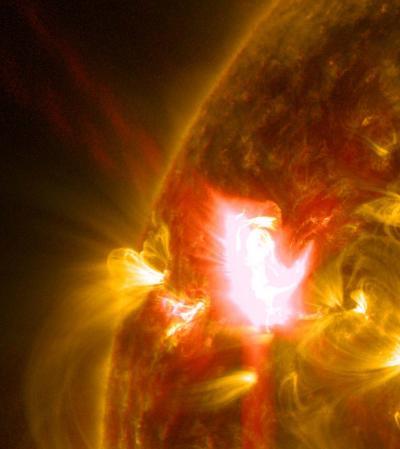On April 2, 2014, the sun emitted a mid-level solar flare, peaking at 10:05 a.m. EDT, and NASA's Solar Dynamics Observatory captured imagery of the event. Solar flares are powerful bursts of radiation. Harmful radiation from a flare cannot pass through Earth's atmosphere to physically affect humans on the ground, however -- when intense enough -- they can disturb the atmosphere in the layer where GPS and communications signals travel.
To see how this event may impact Earth, please visit NOAA's Space Weather Prediction Center at http://spaceweather.gov, the U.S. government's official source for space weather forecasts, alerts, watches and warnings.
This flare is classified as an M6.5 flare. M-class flares are ten times less powerful than the most intense flares, which are labeled X-class. The number after the M provides more information about its strength. An M2 is twice as intense as an M1, an M3 is three times as intense, etc.

A mid-level flare, an M6.5, erupted from the sun on Apr. 2, 2014, peaking at 10:05 a.m. EDT. This image from NASA's Solar Dynamics Observatory shows the flare in a blend of two wavelengths of extreme ultraviolet light: 131 Angstroms and 171 Angstroms, colorized in yellow and red, respectively.
(Photo Credit: NASA/ Solar Dynamics Observatory/ Goddard Space Flight Center)
Source: NASA/Goddard Space Flight Center